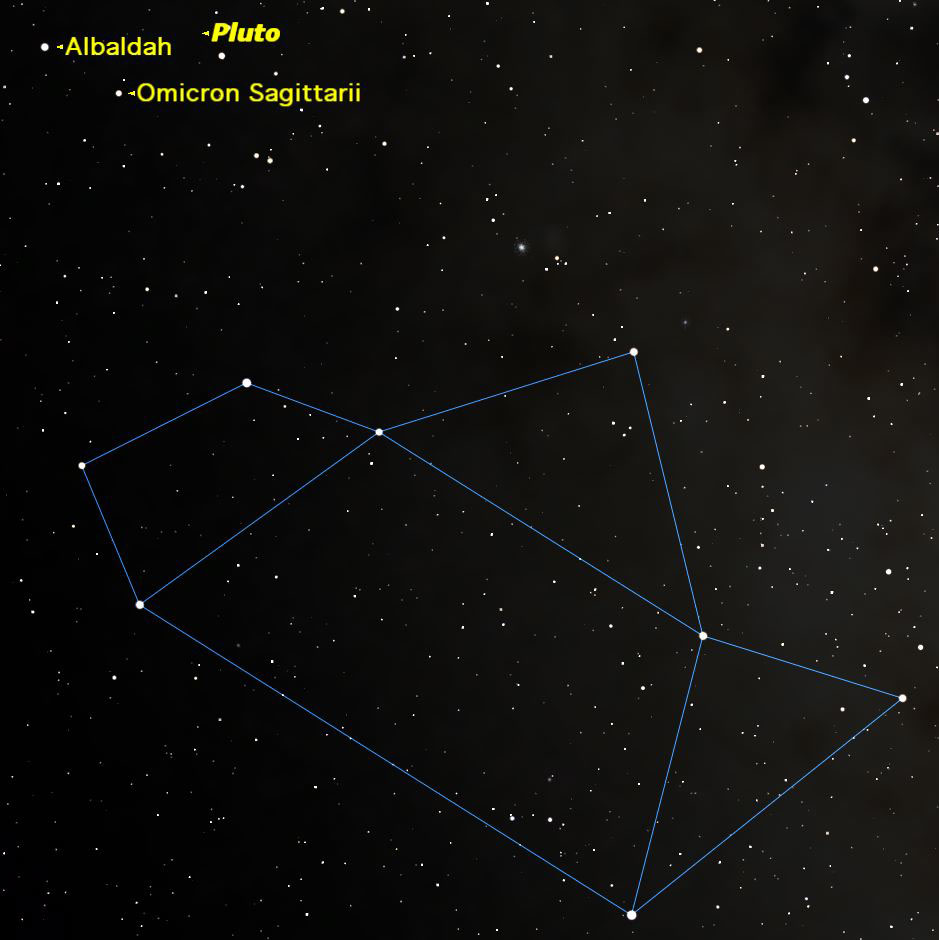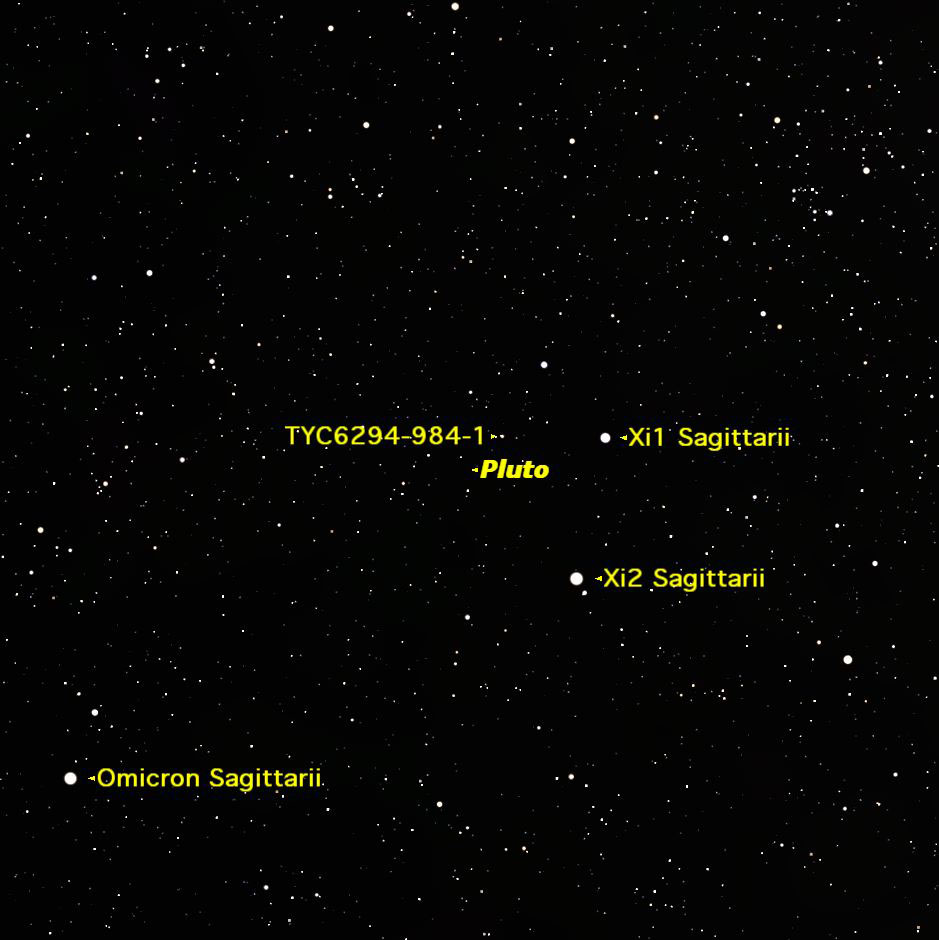Observing Pluto
by Geoff Gaherty
Simulation Curriculum Corp.
The fly-by of Pluto by New Horizons will spark a lot of interest in observing Pluto.
I’ve observed Pluto several times over the last 15 years, using Starry Night, and more recently SkySafari 4 as my main tool for generating finder charts. My observations were all made a few years ago, when Pluto was nearer to the Earth, and hence brighter. I used 10- and 11-inch telescopes under dark country skies; today a larger aperture may be necessary.
For this discussion, I’ll use the date of the fly-by, July 14, as my point of reference. Anyone looking for Pluto on any other night will need to generate his or her own charts using Starry Night or the Star Chart provided in the Pluto Safari app. Pluto moves noticeably from night to night against the background stars.
On July 14 Pluto will be magnitude 14.1. Theoretically this would make it visible in an 8-inch telescope, but practical experience shows that in my 11-inch, stars of this brightness are only visible at high magnification with averted vision on the darkest and steadiest of nights.
My first chart, with a 15 degree field of view, shows Pluto’s general location relative to the Sagittarius “tea pot” asterism. The stars in this chart go down to about magnitude 8.5, which is much brighter than Pluto, but will serve to get you pointed in the right direction. Albaldah (Pi Sagittarii, magnitude 2.9), Omicron Sagittarii (magnitude 3.8), and Xi2 Sagittarii (magnitude 3.5) form a bright triangular asterism.

My second chart zooms in on the three stars nearest to Pluto, found above the “handle” of the teapot: Omicron, Xi1, and Xi2. The width of this field is 3 degrees, and the faintest stars shown are around 12th magnitude, roughly the same brightness as Pluto.

How do you tell which 12th magnitude speck is Pluto? For that you need to go to the third chart, the view with a high power eyepiece, 15 arc minute field of view.

This is the chart you will need to actually identify Pluto. The little asterism in the upper right corner with the brightest star TYC6294-984-1 (also known as HD 175972) will be your guide to identifying the field of view. For this chart I downloaded the dimmest stars in the Starry Night database, going down to about magnitude 17.5.
The only way to be absolutely certain that you have seen Pluto is to plot its position on at least two different nights. This is exactly what Clyde Tombaugh did photographically back in 1930 when he first identified Pluto, and it remains the only way to be certain which of these tiny specks of light is Pluto.
Use the chart above to identify Pluto as best you can, and mark any stars that are noticeably different from the chart. Then repeat your observation a night or two later, and see if your “suspect” has in fact moved. Then, and only then, will you be absolutely certain that you have in fact observed Pluto.
Good luck!







